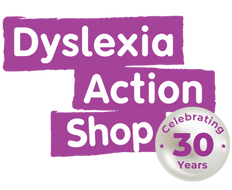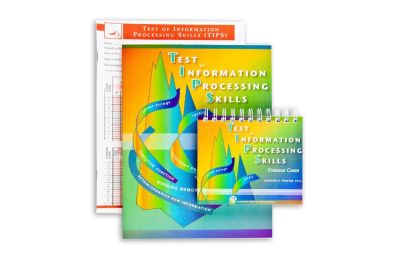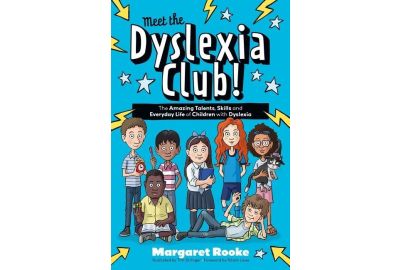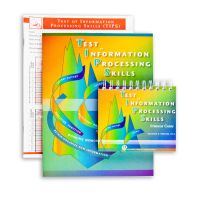Helen Walker MDG and Jeanette Butterworth MDG, of Dyslexia Test Centre, consider assessment using the TIPS test battery.
As professionals in the field of Specific Learning Difficulties (SpLD), we continuously seek innovative tools and methods that can enhance the support we offer to individuals with dyslexia.
Given that many of our assessments are carried out online, we are particularly interested in tools that can be administered remotely and provide valuable insights into processing abilities. Our pursuit of assessments that complement existing ones led us to investigate and invest in TIPS, an assessment tool that measures both visual and auditory processing abilities.
In this article, we will explore the TIPS assessment, how it works, its benefits, and how it fits in to the broader assessment framework for dyslexia.
Understanding visual and auditory processing in dyslexia
Dyslexia is commonly associated with difficulties in reading, spelling, and writing, but the root of these challenges often lies in how individuals process visual and auditory information. Effective dyslexia support relies not just on addressing literacy skills but also on understanding the cognitive processes that underpin these difficulties.
• Visual processing refers to how the brain interprets visual stimuli such as letters and words. Dyslexic individuals may struggle with tasks like visual discrimination (differentiating between similar letters, such as ‘b’ and ‘d’), visual memory (recalling what they have seen), and tracking text while reading.
• Auditory processing involves how the brain interprets sounds, which is crucial for phonological awareness. Dyslexic individuals may have difficulties distinguishing between similar sounds, retaining auditory sequences, or processing spoken information – issues that can affect reading fluency, spelling and comprehension.
By assessing these core processes, we can better understand each individual’s strengths and weaknesses and develop targeted interventions to support their learning.
What is TIPS?
The Test of Information Processing Skills is an assessment tool that can be used face-to-face or online that evaluates both visual and auditory processing abilities. It was developed by experts in educational psychology and neuroscience, with the aim of providing a nuanced understanding of the processing challenges individuals may face.
TIPS can be used with individuals aged 5 to 90+, as long as they are familiar with letter names, making it versatile for various age groups and needs. TIPS is particularly useful for SpLD professionals, including dyslexia assessors and educational psychologists, who require detailed insights into how a student processes information. The assessment can be administered both in person and remotely, making it accessible and adaptable to different contexts. The norms are based on US populations but this shouldn’t be too problematic as there are few cultural references.
How the TIPS assessment works
The TIPS assessment is divided into two core areas: visual processing and auditory processing, with each section containing tasks designed to assess specific aspects of these processes. It also looks at delayed recall and word fluency. It takes approximately 25 minutes to complete the full battery of tests.
• Visual processing tasks: These tasks assess skills such as visual discrimination, visual memory and sequential processing. Participants begin by viewing a sequence of letters for two seconds and then recalling the order. As the task progresses, additional cognitive demands are introduced, such as counting aloud before recalling the letters and repeating sentences before recalling the sequences. This increasing complexity evaluates the participant’s ability to retain and process visual information under higher cognitive load.
• Auditory processing tasks: These tasks are similar to the visual processing tests but are administered using auditory stimuli. The participant hears sequences of letters rather than seeing them, testing their ability to process and remember auditory information. Again as the task progresses, additional cognitive demands are introduced, such as counting aloud before recalling the letters and repeating sentences before recalling the sequences.
• Delayed recall: After a certain time has elapsed, the participant is asked to recall information from the sentences they repeated during the visual and auditory tasks, assessing their long-term memory when distractions are present.
• Word fluency (for individuals over nine years old): This section evaluates both written and oral word fluency, an important aspect of language processing and literacy skills. This measures the ability to generate language. Task one asks the participant to say as many words starting with a given letter in 60 seconds.
Task two asks the participant to write as many words starting with a given letter in 60 seconds. These scores give an oral and written word fluency score. We have found this particularly useful with people with ADHD and word-retrieval difficulties. Once the tasks are completed, assessors can either analyse the raw data themselves or use the online scoring system provided by TIPS, which generates a detailed report, including a graphical representation of the participant’s performance across different tasks.
However, do be aware of data legislation. We ask our clients for their consent, if using the online scoring system. For more information, please see our article about this in an earlier issue of Dyslexia Review (Autumn/Winter 24, p.19) and also the publisher guidance on this particular test: https://assessments.academictherapy.com/p/privacy
Benefits of TIPS for dyslexia assessors
TIPS offers several key advantages that make it a powerful tool for dyslexia professionals:
1. Holistic understanding of processing strengths and weaknesses
Dyslexia assessments often focus heavily on literacy tasks like reading and writing, but these do not always reveal the underlying processing difficulties. The TIPS assessment complements traditional assessments by evaluating the cognitive processes that directly impact literacy skills. This allows assessors to identify whether difficulties stem from visual or auditory processing challenges, providing a clearer understanding of how to intervene effectively.
2. Personalised intervention planning
TIPS provides a detailed breakdown of the participant’s processing abilities, enabling assessors to develop highly personalised intervention plans. For example, if a student shows significant difficulties in auditory processing, interventions can focus on phonological awareness training. Conversely, if visual processing is the main issue, strategies might include using visual aids or modified text formats to enhance comprehension.
3. Efficiency and versatility
TIPS is a fast and efficient tool to administer, making it ideal for use in both individual and group settings. This is particularly beneficial for using in addition to core assessments when we see a low score with adult clients, who may need quicker yet comprehensive assessments.
4. Delayed recall for memory assessment
The delayed recall aspect of TIPS is particularly valuable for assessing long-term memory, especially when individuals are distracted by competing cognitive tasks. This can help identify additional challenges related to memory retention and retrieval, which are common in individuals with dyslexia.
Practical applications: Integrating TIPS with other assessments
TIPS is an excellent tool for assessing processing skills but, like all assessments, it is most effective when used in conjunction with other diagnostic tools. For example, combining TIPS with assessments like the Comprehensive Test of Phonological Processing (CTOPP 2) or the Wide Range Achievement Test (WRAT V) provides a more complete picture of an individual’s abilities. We have found that TIPS results correlate well with the Test of Memory and Learning (TOMAL 2), particularly in assessing auditory processing skills (Memory for Stories).
By integrating TIPS into a broader suite of assessments, professionals can ensure they are providing a holistic view of the individual’s strengths and challenges, leading to more informed and targeted interventions.
Challenges and considerations
While TIPS is an effective tool for assessing visual and auditory processing, it’s important to remember that no single assessment can capture the full complexity of dyslexia. Visual and auditory
processing difficulties are only part of the picture, and some individuals may not show significant deficits in these areas. Therefore, as stated above, it should be used as part of a comprehensive assessment strategy that also considers other cognitive, linguistic and environmental factors.
Additionally, TIPS results must be interpreted by trained professionals who can analyse the data in the context of the individual’s broader learning profile. While the automated scoring
system is helpful, it is the professional judgement and expertise of the assessor that ultimately determines the most effective intervention plan.
Conclusion: A valuable tool for a new era in dyslexia assessment
The TIPS online assessment represents a significant advancement in how we evaluate and support individuals with dyslexia. By providing detailed insights into visual and auditory processing skills, it allows professionals to develop more personalised, data-driven intervention strategies. Its accessibility, ease of administration, and comprehensive reporting make it a valuable addition
to the toolkit of dyslexia assessors.
As we move forward into 2025 and beyond, tools like TIPS will play an increasingly important role in ensuring that our assessments are not only thorough but also tailored to the individual needs of each learner. By embracing innovative assessment methods like TIPS, we can continue to enhance the support we provide to individuals with dyslexia, helping them achieve their full potential.
The article was originally published in The Dyslexia Review, Vol 35, No 1 Spring Summer 2025.




